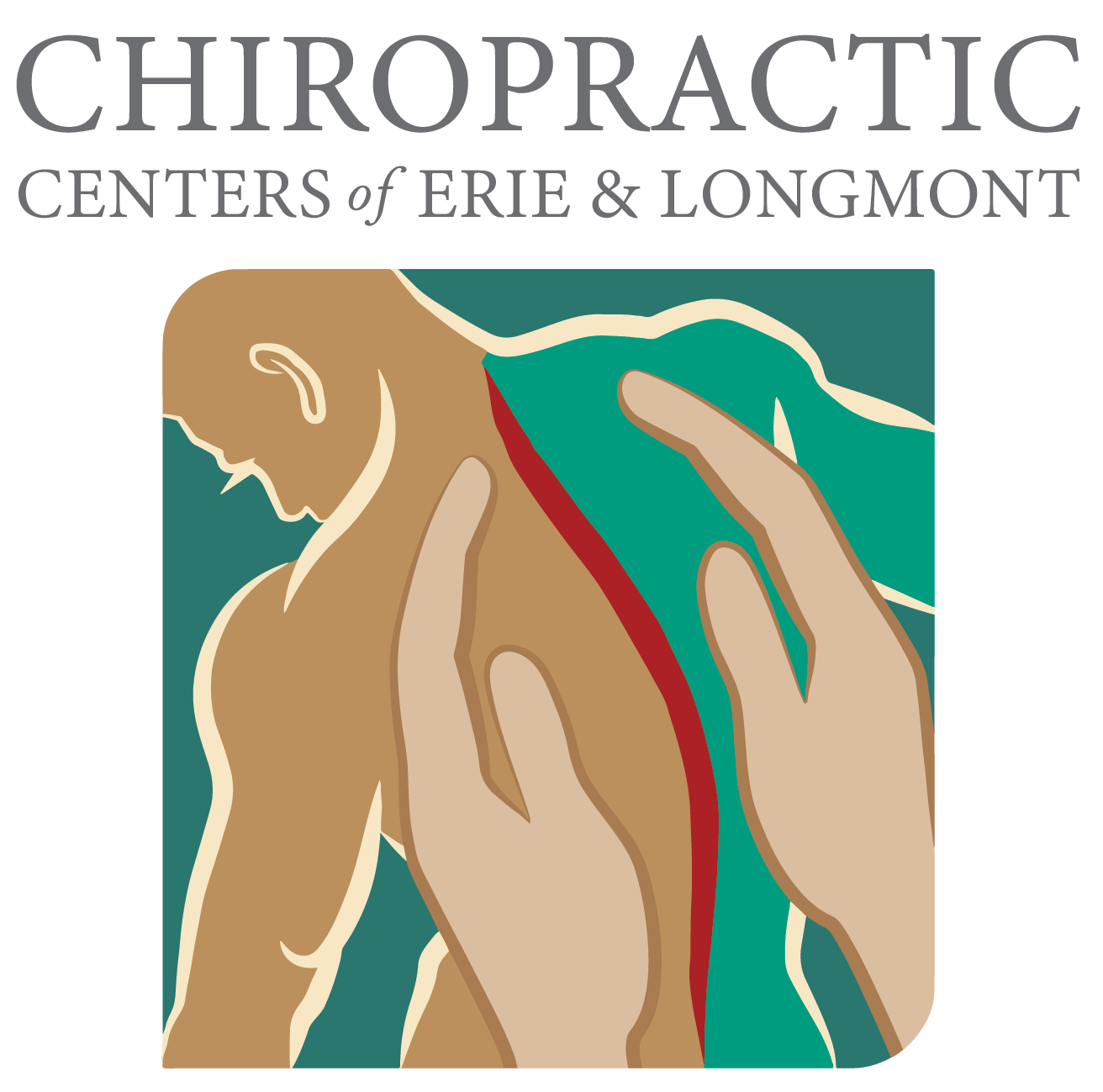How Chiropractic Care Can Help Relieve Carpal Tunnel Symptoms
As we increasingly live in a digital world, carpal tunnel syndrome is affecting more people than ever before. If you find everyday tasks such as typing or carrying groceries painful due to wrist and hand discomfort, you don’t have to suffer in silence. Instead of resorting to invasive surgeries, consider chiropractic care, a holistic alternative with numerous potential benefits for your condition. Our expert chiropractors at the Chiropractic Center of Erie and the Chiropractic Center of Longmont have helped several patients find relief from carpal tunnel symptoms, enabling them to regain their quality of life. In this post, we’re about to unveil how chiropractic treatment can become an essential ally in your fight against carpal tunnel syndrome. Let’s dive into the seamless union of science and nature.
Chiropractic care can be a highly effective treatment for carpal tunnel syndrome as it aims to correct misalignments in the spine and extremities that can contribute to nerve compression and inflammation. Through spinal adjustments and wrist and hand adjustments, chiropractors can help reduce swelling in the carpal tunnel, encourage proper blood flow, and improve nerve function. Additionally, chiropractic care can be used alongside other treatments like physical therapy or surgery to provide a comprehensive approach to managing carpal tunnel syndrome.
Understanding Carpal Tunnel Syndrome
Before delving into the ways chiropractic care can provide relief for carpal tunnel syndrome, it’s important to gain a clear understanding of what this condition entails. Carpal tunnel syndrome is characterized by one or more of these symptoms, pain, numbness, tingling, and weakness in the hand and wrist. These symptoms occur due to compression or pinching of the median nerve as it passes through a narrow passage called the carpal tunnel in the wrist.
There are several factors that can contribute to the development of carpal tunnel syndrome. Repetitive motions, such as typing or using tools, can put strain on the wrist and lead to inflammation. Other conditions such as rheumatoid arthritis, obesity, diabetes, and hypothyroidism can also increase the risk of developing carpal tunnel syndrome.
For example, imagine a person who spends long hours every day working on a computer, constantly typing away with improper wrist alignment. Over time, this repetitive motion can result in inflammation and swelling in the carpal tunnel area, leading to the onset of carpal tunnel syndrome symptoms.
This condition can cause significant discomfort and impact daily activities. Tasks that once seemed simple, like gripping objects or writing, may become painful and challenging. It is essential to seek effective treatment options that address the root cause of the issue.
Now that we have a solid understanding of carpal tunnel syndrome, let’s explore how chiropractic techniques can provide relief for this condition.
- Carpal tunnel syndrome is a condition that can cause discomfort and impact daily activities. It’s important to understand the causes and seek effective treatment options that address the root of the issue. Chiropractic techniques can provide relief for carpal tunnel syndrome by addressing inflammation and improving wrist alignment.
Chiropractic Techniques for Carpal Tunnel Relief
Chiropractic care offers a unique and sensible approach to addressing carpal tunnel syndrome. Unlike medication or physical therapy, which only provide temporary relief, chiropractic care aims to provide a more long-term and effective solution.
One of the primary ways chiropractors help with carpal tunnel syndrome is through adjustments of the bones in the wrist and associated areas in the spine. By restoring proper function to the spine, chiropractic adjustments can reduce swelling in the carpal tunnel area. When misalignments in the spine exist, they can contribute to compression and inflammation, exacerbating the symptoms of carpal tunnel. By correcting these misalignments, chiropractic adjustments alleviate the pressure on the median nerve, reducing pain and discomfort.
In addition to spinal adjustments, chiropractors also perform wrist and hand adjustments. These targeted adjustments typically toward the carpal tunnel, formed partially by the wrist bones, help restore proper alignment, space in the tunnel, and function to the wrist and hand joints, further reducing inflammation and promoting healing. This comprehensive approach addresses both the underlying spinal issues and the localized problems in the wrist and hand.
Furthermore, chiropractic care encourages proper blood flow by minimizing nerve interference in the spine, hand, and arm. When nerves become compressed or irritated due to spinal misalignments, it can lead to reduced blood flow to the affected areas. Increased blood flow is crucial for delivering nutrients and oxygen to promote healing and reduce inflammation.
By removing these spinal misalignments that may contribute to swelling in the carpal tunnel area, chiropractic care tackles carpal tunnel syndrome at its core. Additionally, chiropractic care focuses on boosting overall body health. By addressing factors such as obesity, diabetes, hypothyroidism, or other conditions that may contribute to carpal tunnel issues, chiropractic care aims to decrease the severity of these factors and provide comprehensive relief.
Think of it like a team of professionals coming together to address every aspect of your carpal tunnel syndrome – from the misalignments in your spine to the inflammation in your wrists – each part being addressed individually but working together seamlessly for optimal relief.
Chiropractors who specialize in treating carpal tunnel syndrome employ a range of techniques tailored to each patient’s specific needs. Through a combination of spinal adjustments, wrist and hand adjustments, therapeutic exercises, and lifestyle recommendations, chiropractic care provides a holistic approach and, many times, a one stop shop, to alleviate carpal tunnel symptoms and promote long-term healing.
Spinal and Wrist Adjustments
One of the primary methods chiropractors employ to help relieve carpal tunnel syndrome symptoms is through spinal and wrist adjustments. By targeting specific areas of the spine and the affected wrists, chiropractic adjustments aim to restore proper alignment and function, reducing swelling and improving nerve flow.
Chiropractors are trained to identify misalignments in the spine that can contribute to nerve compression and inflammation, which are common culprits in carpal tunnel syndrome. Through gentle manipulations and adjustments, they can realign the vertebrae, relieving pressure on the nerves that travel down the arms and into the hands.
In addition to spinal adjustments, chiropractors also perform wrist adjustments. They apply targeted pressure or gentle manipulation techniques to the affected wrists, aiming to reduce inflammation within the carpal tunnel. This can help alleviate pain, numbness, and tingling sensations that accompany carpal tunnel syndrome.
It’s important to note that each patient’s treatment plan may vary depending on their specific needs and condition severity. Some patients may require more frequent adjustments during the initial stages of treatment, while others may benefit from ongoing maintenance visits to prevent future flare-ups.
While spinal and wrist adjustments play a significant role in addressing carpal tunnel symptoms, posture correction and motion improvement are equally crucial aspects of chiropractic care for this condition.
Posture Correction and Motion Improvement
Poor posture and repetitive motions can contribute to the development and exacerbation of carpal tunnel syndrome. Chiropractic care addresses these issues by focusing on posture correction and motion improvement.
By evaluating a patient’s posture, chiropractors can identify any misalignments or imbalances in the spine and other areas of the body that may be contributing to the condition. Through targeted adjustments, exercises, and stretches, chiropractors help patients improve their posture and maintain proper alignment. This not only reduces strain on the wrists but also promotes overall spinal health.
Additionally, chiropractors guide patients on ergonomic principles and provide recommendations for modifying workstations or daily activities to reduce stress on the wrists. They may suggest using wrist supports, ergonomic keyboards, or adjusting seating arrangements to promote more neutral wrist positions during various tasks.
While spinal and wrist adjustments focus on immediate symptom relief, posture correction and motion improvement address underlying causes and help prevent future occurrences of carpal tunnel symptoms.
Evaluating Chiropractic Treatment Risks: Minimal
When considering any form of medical treatment, it is essential to weigh the potential risks involved. Chiropractic care for carpal tunnel syndrome (CTS) is generally regarded as safe and non-invasive. However, like any medical intervention, there are some inherent risks that should be evaluated.
It’s important to note that the risk associated with chiropractic care for CTS is considered minimal. Chiropractors are highly trained professionals who specialize in detecting and correcting misalignments of the spine, known as vertebral subluxations. By addressing these subluxations, chiropractors aim to alleviate nerve compression and promote overall healing.
While chiropractic adjustments have shown to be effective in improving wrist mobility, reducing nerve irritation, and alleviating muscle tension in CTS patients, there are some potential risks to consider. In rare cases, individuals may experience mild soreness or discomfort following an adjustment. This is typically temporary and subsides on its own.
It’s also important to ensure that you seek care from a licensed chiropractor who is specifically trained in detecting and correcting vertebral and extremity subluxations. This will help minimize any potential risks associated with chiropractic treatment for CTS.
Overall, when evaluating the risks of chiropractic treatment for carpal tunnel syndrome, it is crucial to consider the individual’s specific condition and medical history, as well as the expertise of the chiropractor providing the care. Open communication with your healthcare provider is key in addressing any concerns or questions you may have regarding the safety of chiropractic treatment for CTS.
Now that we have explored the potential risks associated with chiropractic treatment for carpal tunnel syndrome, let’s discuss alternatives and complementary treatments that may aid in easing CTS symptoms.
Alternatives and Complements to Chiropractic Care
While chiropractic care offers a holistic approach to managing carpal tunnel syndrome causes and symptoms, there are also alternative and complementary treatments that can be considered to enhance overall relief. These options can be used alongside or instead of chiropractic care, depending on individual preferences and needs.
One popular alternative to chiropractic care for CTS is physical therapy. Physical therapists specialize in rehabilitative exercises that aim to improve strength, flexibility, and range of motion in the affected wrist and hand. They may also incorporate modalities such as ultrasound, heat, or cold therapy to reduce inflammation and alleviate pain. Many chiropractors also incorporate these therapies.
In addition to physical therapy, special exercises targeted specifically for carpal tunnel syndrome can help relieve symptoms and improve overall hand function. These exercises often focus on stretching and strengthening the muscles surrounding the wrist and hand. Some examples include wrist extensions, finger stretches, and nerve gliding exercises.
For instance, a common exercise technique known as nerve gliding involves gently stretching the median nerve – the primary nerve affected in carpal tunnel syndrome – through a series of specific movements. This helps to mobilize the nerve and improve its function while reducing symptoms such as tingling and numbness.
It’s worth noting that alternative treatments like acupuncture or occupational therapy are sometimes used as complements to chiropractic care or as standalone options. While their effectiveness may vary from person to person, these therapies have been reported by some individuals to provide additional relief from CTS symptoms, but the primary cause is usually treated structurally by the chiropractor.
By considering alternatives and complementary treatments alongside chiropractic care, individuals with carpal tunnel syndrome can explore a multi-faceted approach toward symptom management. However, it’s important to consult with healthcare professionals to determine which combination of treatments is most suitable for your specific case.
Physical Therapy and Special Exercises
When it comes to treating carpal tunnel syndrome, physical therapy, and special exercises can play a crucial role in relieving symptoms and improving hand function. Please note that a well-trained and caring chiropractor can prescribe and teach you the physical therapy approach. Physical therapy aims to strengthen the muscles surrounding the wrist and hand, increase flexibility, and reduce pain through targeted exercises and techniques.
Think of physical therapy as a customized workout plan for your hands and wrists. Just like how regular exercise helps strengthen your body, specific exercises for carpal tunnel syndrome can strengthen the muscles in your hand, promoting better functionality.
One of the primary goals of physical therapy is to improve the range of motion in the affected hand. This may involve stretching exercises that gently extend the fingers, flexing and extending the wrist joint, or using devices such as therapy putty or stress balls to improve grip strength. These exercises help alleviate stiffness, reduce inflammation, and enhance overall mobility.
In addition to exercises aimed at increasing flexibility and range of motion, physical therapists may also incorporate strengthening exercises into the treatment plan. These exercises target the muscles in the hand and forearm, aiming to build strength and support for the wrist joint. By gradually increasing resistance with various tools like weights or resistance bands, patients can improve their ability to perform daily tasks without discomfort.
For instance, a common exercise recommended for carpal tunnel syndrome is wrist curls. To perform this exercise, you would hold a light dumbbell or another weighted object in your hand with your palm facing up. Slowly lower your hand downwards while keeping your forearm stable, then curl it back up towards you. This exercise targets the muscles surrounding the wrist joint and can be beneficial in relieving symptoms.
In conjunction with these targeted exercises, physical therapy for carpal tunnel syndrome may also involve other modalities such as heat or ice therapy, ultrasound, or electrical stimulation. These additional treatments can provide pain relief, reduce inflammation, and promote healing in the affected area.
While physical therapy and specialized exercises can be effective in relieving carpal tunnel symptoms for many individuals, there are instances where surgical interventions may be necessary. Let’s explore these options next.
Surgical Interventions and Preventative Measures
In cases where conservative treatments like chiropractic or other therapies do not provide sufficient relief or if the condition is severe, surgical interventions may be considered for carpal tunnel syndrome. Surgical procedures aim to relieve pressure on the median nerve by enlarging the carpal tunnel, allowing more space for the nerve to pass through.
Carpal tunnel release surgery is one such option. This procedure involves making an incision in the palm or wrist and cutting the transverse carpal ligament that forms the roof of the carpal tunnel. By releasing this ligament, pressure on the median nerve is alleviated, resulting in decreased pain and improved hand function. It may be obvious, but surgeries carry risks and those should be carefully scrutinized before choosing that option.
It’s important to note that surgical interventions should always be discussed and undertaken under the guidance of a hand specialist or surgeon experienced in treating carpal tunnel syndrome.
Following surgery, a period of recovery and rehabilitation is typically necessary. This may include wearing a splint or brace to support the wrist during healing, engaging in physical therapy to regain strength and flexibility, and following post-operative instructions provided by healthcare professionals.
While surgery can provide immediate relief for severe cases of carpal tunnel syndrome, it’s also crucial to take preventive measures to minimize the risk of recurrence or worsening symptoms. These preventative measures may involve maintaining good posture, practicing proper ergonomics while using computers or performing repetitive tasks, taking regular breaks to rest and stretch, and avoiding activities that aggravate symptoms.
For example, if you work at a computer desk for long hours, it’s important to ensure your workstation is properly set up with ergonomic principles in mind. Adjusting your chair height, using a wrist rest, keeping your wrists straight while typing, and taking breaks to stretch and relax your hands can all contribute to preventing carpal tunnel syndrome.
By combining surgical interventions with these preventative measures, individuals can work towards long-term relief and mitigate the risk of future complications.
Contact a Chiropractor Today!
If you’re interested in Dry Needling in seeing a chiropractor or getting a chiropractic adjustment, visit us at one of our offices in Erie or Longmont. The Chiropractic Center of Erie and Chiropractic Center of Longmont treat the body holistically with our award-winning treatment process which can include Dry Needling when requested. Please consider our complete plan that not only treats the misalignments but pays attention to the nerves and muscles to promote your correction and the best life ahead. If you have been to multiple chiropractors, you happen to be our favorites because you will know how our care stands apart. We have been voted “Best of the West” eleven times and we aim to help your body achieve and maintain optimal performance.
We specialize in treating patients suffering from spinal pain and many other maladies and have helped several patients find relief without the need for surgery. If you’d like to learn more about chiropractic care in Longmont or Erie or have questions about what to expect during your first chiropractor visit in Erie or Longmont, call our offices today at 303-828-3000 or 303-772-1950!







